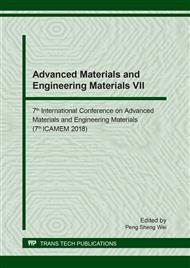p.393
p.397
p.402
p.411
p.416
p.421
p.426
p.432
p.438
Material Characteristic for Capability Analysis of Solid Tire by Finite Element Method
Abstract:
The natural rubber compound of each layer of solid tire had determined the mechanical properties in tension. It was found that the stress-strain relation of each material tire layer was fitted very well with the Ogden constitutive model. The R2 which was 0.986, 0.996 and 0.985 represented the certain curve fitting on the internal, middle and tread layer of solid tire, respectively. Subsequently, the Ogden model was implemented in the finite element model of the rubber specimen and solid tire. The finite element analysis results obtained an average error of 18.00% and 14.63% for the specimen and solid tire model by comparing to the physical experiment, respectively. Particularly, the mechanical properties of the natural compounds could be used to predict the ultimate compression load for the solid tire failure.
Info:
Periodical:
Pages:
416-420
Citation:
Online since:
August 2018
Authors:
Keywords:
Price:
Сopyright:
© 2018 Trans Tech Publications Ltd. All Rights Reserved
Share:
Citation:


